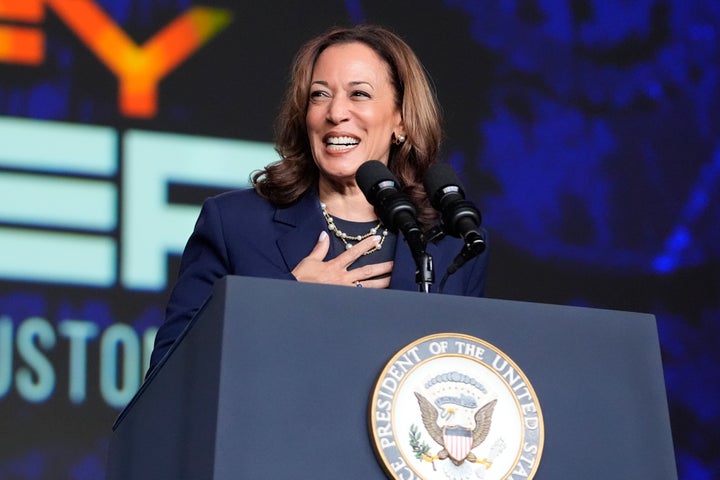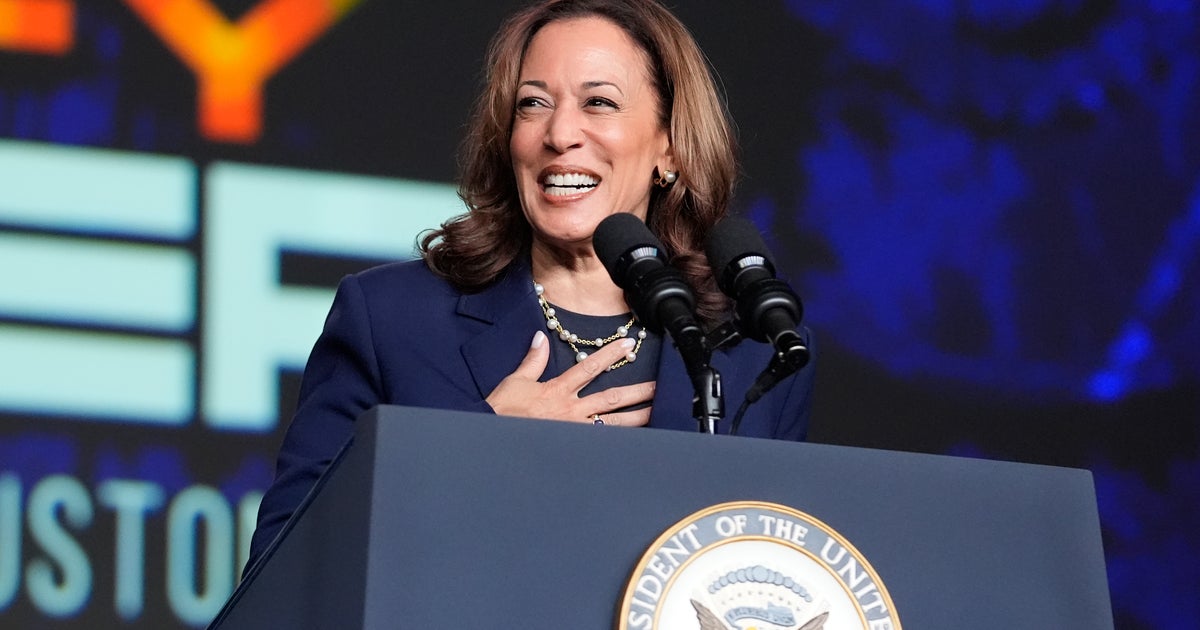WASHINGTON (AP) — The crowds are psyched. The campaign donations are flooding in. Volunteers are showing up at field offices in droves.
After a mostly smooth two-week campaign startup, Vice President Kamala Harris is headed into a crucial week that includes her most critical decision yet — choosing a running mate — while grappling with how to keep that early political momentum alive.
Harris, a former prosecutor known for being deliberative, effectively has a deadline of Tuesday to select who will be her No. 2 from a list that has been whittled down to four governors, a senator and a Cabinet official who was also one of her 2020 foes. It’s a high-pressure decision that usually spans several months, but in this case is compressed into a matter of just weeks.
From there, Harris and her running mate will launch into an aggressive, seven-state battleground tour that begins in Philadelphia on Tuesday and winds through Wisconsin, Michigan, North Carolina, Georgia, Arizona and Nevada. Her early rallies have attracted enthusiastic thousands.
Campaign officials are aware that momentum can be fleeting and are working to capitalize on the energy now, while managing expectations by continuing to emphasize the race with Republican nominee Donald Trump is tight. But the strong rollout has allowed the Harris campaign to put a number of states back in play that had been feared out of reach when President Joe Biden remained at the top of the ticket.
Harris faces new tests in the coming days as she works though key decisions — including her vice presidential pick, with the potential to disappoint elements of the coalition.
She has not faced the level of scrutiny that presidential candidates typically face. While she has kept up a busy schedule of public appearances, she has rarely taken questions from the press and has not sat for an in-depth interview. After four years advocating for Biden’s positions, she’ll have to stake out positions of her own on the political controversies that divide Democrats.
Harris’ message is coming into clearer focus with each day. Her first television ad last week portrayed her as “fearless” and emphasized what has emerged as a rallying cry for her campaign: “We are not going back.”
She is also repeatedly emphasizing the concept of freedom, focusing not just on Trump as a threat to democracy but also the freedom to have an abortion and be safe from gun violence.
Meanwhile, her prosecutorial background is emerging as a central dividing line with Trump. In rallies and ads, she contrasts her record going after hardened criminals and corporate wrongdoers against Trump’s indictments, convictions and civil judgments.
Trump, for his part, is racing to define her as a soft-on-crime San Francisco liberal who was tasked with securing the border as vice president but failed. He blames her and Biden alike for inflation during their tenure. He’s also gone after her personally, questioning her intelligence and her biracial identity.

As she and her TBD running mate hit the battleground states this coming week, the vice president is planning a renewed offensive in Arizona, Nevada, North Carolina and Georgia. The Biden campaign had long named them among its key targets but had started to abandon hope there in favor of shoring up the so-called “blue wall” states of Michigan, Wisconsin and Pennsylvania. Campaign manager Julie Chavez Rodriguez is now focusing more on Arizona and Nevada because of what officials say is Harris’ increased competitiveness against Trump in the two states, both of which Biden won four years ago.
“We are the underdogs in this race,” the campaign’s battleground states director, Dan Kanninen, told reporters this past week, repeating a phrase that Harris herself has stressed. “But the groundswell of support around the vice president is real, and it’s meaningful. Our task now is to translate that enthusiasm into action.”
The Harris campaign says volunteers placed 2.3 million phone calls, knocked on 172,000 doors and sent nearly 2.9 million text messages to voters in battleground states over 12 days. More than 130,000 people logged into an online organizing event with Harris and 750,000 people signed up for a campaign event for the first time, according to a memo from Kanninen.
Harris herself is remaining quiet in Washington this weekend, with interviews underway for about a half-dozen potential running mates who have effectively been auditioning publicly through media interviews. The contenders on her interview list, all white men, are Govs. Andy Beshear of Kentucky, J.B. Pritzker of Illinois, Josh Shapiro of Pennsylvania and Tim Walz of Minnesota, as well as Sen. Mark Kelly of Arizona and Transportation Secretary Pete Buttigieg, according to people with knowledge of Harris’ selection process.
Harris has revealed little about her deliberations, but she will undoubtedly lean on her own experience of being vetted and eventually chosen as Biden’s running mate four years ago. Various Democratic constituencies are fervently lobbying in favor of — or in some cases, against — some of the names on the vice presidential shortlist, based on geographic considerations, past policy stances and voter sentiment.
On Monday, Harris will formally become the Democratic nominee, when online balloting among delegates concludes. There’s no suspense there: Democratic National Committee Chairman Jaime Harrison said in a virtual meeting with supporters Friday that Harris had already secured enough delegates to become the nominee.
That hastily announced Friday online gathering at times had the feel of a telethon and was plagued with technical hiccups including audio issues -– a reminder that in some ways, Harris’ campaign remains a start-up operation.
Another big moment yet to come will be a debate between Harris and Trump — or not.
The two sparred over the weekend about when and where to debate. Trump pulled out of a Sept. 10 debate on ABC in favor of a Sept. 4 debate on Fox News. Harris’ campaign says it’s sticking with the original date, and Trump posted on social media, “I’ll see her on September 4th or, I won’t see her at all.”

